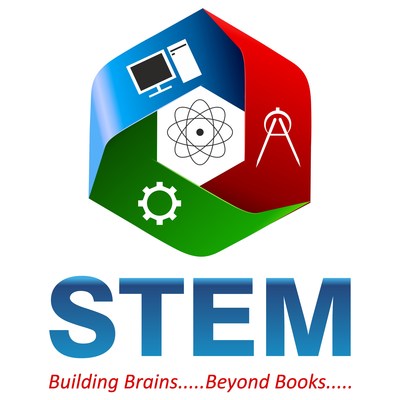“Knowledge is not the mere memory of facts but the comprehension of their meaning in the story of nature.”
STEM Learning: Install MSC, Use Teaching Aids, Shift Education Paradigm From Rote Learning to Experiential Learning
MUMBAI, (PRNewswire): Rote learning is defined as the memorization of information based on repetition. However, this kind of information does not stay with the child forever. People have learnt the laws of physics or maths theorems in their childhood, but have not been able to apply them in their daily lives.
With the world fast moving towards futuristic technology, the children of today are under immense academic stress to be able to apply the concepts and principles of STEM (Science, Technology, Engineering & Maths) in real life situations. This is not possible, as learning has become more related to getting good grades in the examinations than understanding or instilling the concepts. In 1894, Dublin physicist Thomas Preston wrote: “Knowledge is not the mere memory of facts but the comprehension of their meaning in the story of nature.”

The teachers too are facing the same dilemma. They are forced into indulging in promoting rote based learning among students for faster learning. And even if they want to make students understand the concepts by applying meaning to them, they do not have the access to requisite facilities which can help them in this regard. They may not even be given enough time to attain the skill sets required to impart conceptual learning. There may even be circumstances where the teachers are petrified to use the new technology, given the sudden shift to E-learning, as the content has been created by someone else and they may not be comfortable with the new content they have been forced into relying on.
Therefore, the teachers continue to adopt traditional methods of teaching with blackboards and textbooks, which leads to passive learning, disinterest in children, only half-hearted understanding of the subject matter and complete ignorance of real life applications. Therefore, to create an atmosphere of easy learning for students, the teachers need to have access to facilities that they are not just comfortable with, but they need to be ’empowered’ with.
As far back as in 2005, the National Curricular Framework of India (NCF) stated that children should be involved in ‘active engagement through inquiry, exploration, questioning, debates, application and reflection, leading to theory building and the creation of new ideas’. The report gave equal importance to peer interactions to promote learning. Unfortunately, these measures have not witnessed a verdict yet.
The need of the hour is to educate the educator and make learning more conceptual, more hands on to give a new and actual meaning to ‘understanding’. It becomes the innate responsibility of a teacher to shape and mould the students with scientific temper, lateral thinking and problem- solving. STEM Learning believes and intends to do just that.
Since 2011, STEM Learning has been working as a catalyst in the transformation of education by empowering children and teachers. Its innovative program the Mini Science Centre (MSC) consists of plug and-play exhibits, which are a prerequisite for teaching science and maths to school children in a simpler way. More than a million students have benefited till now with the help of MSCs as the exhibits form a new approach to assimilate fun and play in lessons, making learning easy. In fact, the students understand the concepts so well with the help of the exhibits that they start teaching other students, leading to peer-to-peer learning.
Meanwhile, the existing teachers of schools are also empowered by providing special trainings to make their teaching more effective. More than 8000 teachers have till now been provided assistance to make them understand how to teach in a more simplified manner with the help of the exhibits, so that the students can understand faster. The teachers are not dependant anymore and this leads to their professional development as well. As the exhibits are easy to carry, they can be utilized in classrooms as well as during virtual training sessions.
The trained teachers have thus been able to create a sustainable impact on students’ learning because the teaching aids elucidate the concepts and the students are able to envision corresponding images in their minds while discouraging confusion because of the hands on learning. In other words, unlike in rote learning, the students are able to relate with real life examples and observe the effects of changes during the activity. This program has led to a monumental transformation in the teaching pedagogy, thus changing the teaching as well as learning climate. Noticing this change in the education system being brought about by it, STEM.org- a US based international organization for STEM accreditation- has accredited STEM Learning for establishing a highly-effective set of STEM benchmarks.
Ashutosh Pandit, the Founder of STEM Learning, while speaking about the importance of conceptual or hands-on learning says, “Rote learning is definitely an important aspect of the initial learning process. No one can dispute that. However, we can only find meaning of the concepts when we apply how’s and why’s to them. Without this inquisitiveness, the knowledge attained will remain incomplete. Students need a broader sense of meaningful learning, to keep their minds open to ingrain what they will learn in the future. The teachers are the main facilitators who can stimulate the students’ minds not just with monologues but by affecting the learners’ positively. The intention should be to engage all the senses of learners through effective teaching and self-experience.”
STEM Learning’s MSC is therefore an all-encapsulating solution which is imperative in the changing time. It is cost-effective, provides students access to education crossing any geographical barriers and the teachers are empowered as well. This leads to a holistic development in the education process, while learning as well as teaching process become more dynamic, significant and perpetual.
